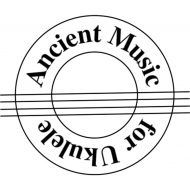Ballads and Songs
What we think of as a ballad is relatively modern. Ballads before the 19th century were poems or words, often depicting a story with a moral, printed on broadsheets and sold. People then put these words to a traditional melody that fit the words. The older melodies used a modal scale in what we now think of as being in a minor key – modern melodies are more chromatic in nature. Melodies were re-used for different songs (e.g. Greensleeves which we also use for the carol “What Child is This). Over time, specific music became associated with specific words. At the same time, composers also wrote music to poems that inspired them.
Because of the “folk” nature of many of these ballads or songs, they evolved over time. Today, you can still hear these 400-year old ballads and songs set to the traditional melody or a modernized version of the melody and/or words.
How to Use This Book
Each piece in this book has the following components:
- A brief history of the words and/or music
- A synopsis of the story, events, or moral of the ballad or song
- The words, modernized in spelling and usage so that we can read and understand them. Verses are in plain text and choruses, if any, are in italics
- The melody written out in modern musical notation and tablature, along with a simple accompaniment or bass line
- The words to the first verse and/or chorus written under the corresponding musical notes
- The corresponding chords written above the notes
NOTE: Chord charts are not included in this book. It is recommended that you obtain a one-page laminated chord chart for the instrument you’re playing (e.g. ukulele or guitar) as a reference.
Here’s an approach to learning and playing the pieces:
- Learn the melody by picking out the music on your ukulele or guitar. Match the words with the notes and start to sing along. Repeat often so that the melody is firmly fixed in your mind.
- Learn the chords.
- Pick a strumming or picking pattern that appeals to you.
- Play your strumming or picking pattern with the chord progression until it becomes “automatic” (i.e. you can play it without thinking too much about it).
- Start singing while strumming/picking. The goal is to have the chords/strumming/picking memorized so that you can read the words and sing along. Repeat and play often.
- Put together a performance. You can “vamp” on a chord until you’re ready to sing or you can play the melody/bass line as an introduction before you strum/pick and sing.
Notes on the Composers
All sources are Wikipedia.
The Child Ballads are 305 traditional ballads from England and Scotland, and their American variants, anthologized by Francis James Child during the second half of the 19th century. Their lyrics and Child’s studies of them were published as the 2,500-page book The English and Scottish Popular Ballads. The tunes of most of the ballads were collected and published by Bertrand Harris Bronson around the 1960s.
The Roud Folk Song Index is a database to nearly 25,000 songs collected from oral tradition in the English language from all over the world. It is compiled by Steve Roud, a former librarian in the London Borough of Croydon. Roud’s Index is a combination of the Broadside Index (printed sources before 1900) and a “field-recording index” compiled by Roud. It subsumes all the previous well-known printed sources known to Francis James Child (the Child Ballads) and includes recordings from 1900 to 1975.
Composers listed in alphabetical order by last name.
Thomas Campion (1567 – 1620) was an English composer, poet, and physician. He wrote over a hundred lute songs, masques for dancing, and an authoritative technical treatise on music. The body of his works is considerable and includes A Book of Ayres with words by himself and music composed by himself and Philip Rosseter.
Thomas Ford (ca 1580 – 1648) was an English composer, lutenist, viol player and poet. He was musician to the court of Henry Frederick, Prince of Wales, son of James I. His most important collection was the Musicke of Sundrie Kindes (London, 1607), which was in two parts. The first book included lute ayres, described as “Aries for 4 voices to the Lute, Orphorion, or Basse-viol, with a Dialogue for two Voices…”. Many of the ayres are given in two versions: one for voice or voices and lute, and another for four equal voices.
Philip Rosseter (ca 1568 – 1623) was an English composer and musician, as well as a theatrical manager. Rosseter was appointed a court lutenist for James I of England, a position he held until his death, Rosseter is best known for A Book of Ayres which was written with Thomas Campion and published in 1601.
